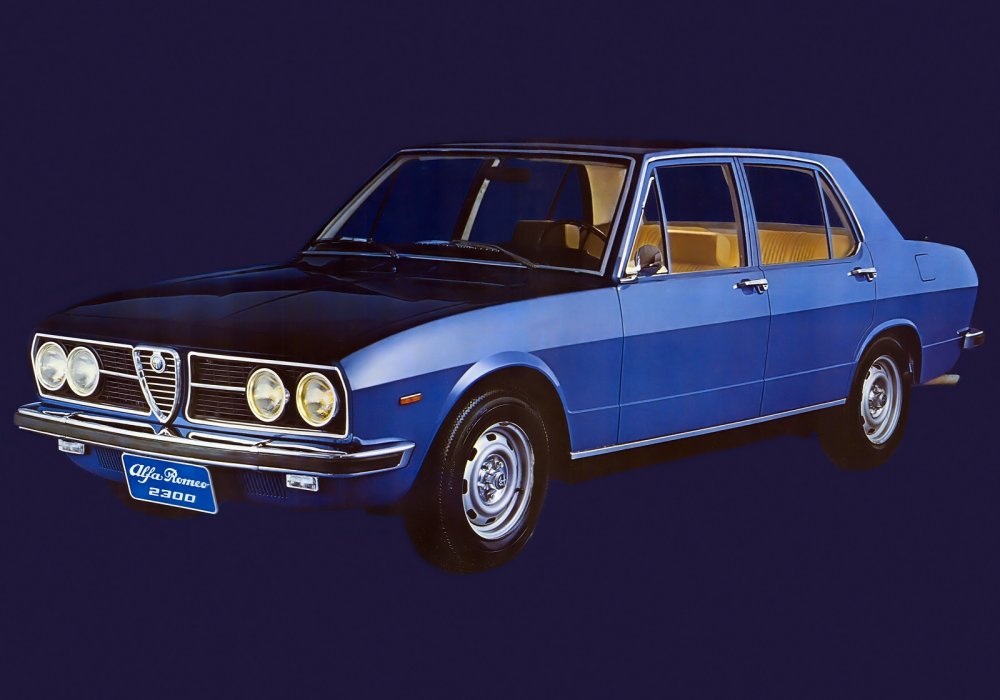The mid-1970s marked a fascinating period in automotive history, as traditional European manufacturers expanded their presence in emerging markets. Brazil’s growing economy presented unique opportunities for established brands to create market-specific vehicles. This expansion led to some remarkable automobiles that combined European engineering with local market requirements.
In 1974, Alfa Romeo’s Brazilian subsidiary unveiled the 2300, a luxury sedan that would reshape the country’s automotive landscape. Born from the Italian manufacturer’s acquisition of local producer FNM, this model represented a bold attempt to create a premium vehicle specifically tailored for South American consumers.
Engineering Excellence in Brazilian Context
The Alfa Romeo 2300 showcased impressive technical achievements that set new standards in the Brazilian market. At its heart lay a robust 2.3-liter engine producing 140 horsepower, delivering performance that matched local driving conditions and fuel quality. The powertrain’s development reflected a deep understanding of market requirements, combining reliability with satisfying performance.
This engineering excellence emerged from careful adaptation of European technology. The five-speed manual transmission, advanced for its time, provided both engaging driving dynamics and practical efficiency. The rear-wheel-drive configuration ensured reliable power delivery while maintaining traditional handling characteristics.
“The 2300’s engine represents one of the most successful adaptations of European technology to South American conditions. Its durability and serviceability made it a favorite among Brazilian luxury car owners.” — Ricardo Santos, Classic Alfa Romeo Specialist at Restauro Vintage, São Paulo
The careful calibration of suspension and steering systems demonstrated Alfa Romeo’s commitment to creating a truly Brazilian luxury car rather than simply transplanting European solutions. The robust construction proved particularly well-suited to varied road conditions while maintaining comfortable ride quality.
Design Philosophy and Comfort Features
When examining the Alfa Romeo 2300’s design, one immediately notices the elegant proportions that characterized the vehicle. The 472-centimeter length and 169-centimeter width created an imposing presence without sacrificing practicality. Clean lines and thoughtful detailing reflected a sophisticated approach to automotive styling.
Interior space prioritized comfort and practicality, departing from the sportier focus of European Alfa Romeos. The cabin layout emphasized passenger comfort and space utilization, reflecting the car’s positioning as a prestigious business sedan.
Fact!
The Alfa Romeo 2300 was the first Brazilian luxury car to feature a factory-installed air conditioning system designed specifically for tropical climates, marking a significant advancement in local automotive comfort features.
Materials selection and build quality demonstrated attention to durability and refinement. The use of robust upholstery materials and careful assembly techniques resulted in interiors that could withstand tropical conditions while maintaining their appearance.
Market Evolution and Performance
The introduction of the enhanced Ti version in 1976 marked a significant evolution in the 2300’s story. With power increased to 149 horsepower, this variant addressed demands for improved performance without compromising the model’s core virtues.
The years between 1974 and 1986 saw continuous refinement of the platform. Alfa Romeo’s commitment to the Brazilian market manifested in regular updates and improvements, responding to customer feedback and changing market conditions.
“The 2300 Ti wasn’t just about additional power—it represented a maturing of the platform. The improvements in drivability and refinement showed how well Alfa Romeo understood the Brazilian premium car market.” — Carlos Mendes, Vintage Car Curator, Museu do Automóvel, Rio de Janeiro
Market reception remained strong throughout the production run, particularly among business executives and government officials. The model’s success influenced local automotive development and raised standards for luxury vehicles in Brazil.
Legacy and Contemporary Significance
Today, the Alfa Romeo 2300 stands as more than just a historical curiosity. Well-preserved examples command increasing attention from collectors who appreciate its unique combination of Italian heritage and Brazilian market specificity.
Important!
Original Alfa Romeo 2300 models, particularly the Ti variant, have seen a 150% increase in collector value over the past decade, reflecting growing recognition of their historical significance.
Restoration challenges often center around sourcing specific components, though a dedicated network of specialists maintains expertise in keeping these vehicles roadworthy. The growing appreciation for preservation has led to improved parts availability and documentation of maintenance procedures.
A Distinctive Chapter in Automotive History
The Alfa Romeo 2300 represents a unique moment in automotive history when global expertise met local market requirements to create something truly special. Its 12-year production run proved the validity of its concept and design.
The model’s influence extends beyond its production numbers, having established new standards for luxury vehicles in South America and demonstrated the potential for successful market-specific development of premium automobiles.
Pros and Cons
| Advantages | Disadvantages |
|---|---|
| Robust 2.3L engine with proven reliability | Limited parts availability in modern times |
| Advanced 5-speed manual transmission for its era | Fuel consumption higher than contemporary European models |
| Spacious interior with focus on comfort | Complex restoration process due to unique Brazilian specifications |
| Strong build quality suited to local conditions | Challenging to find well-preserved examples |
| Historical significance as a Brazilian luxury pioneer | Limited international recognition compared to European Alfas |
| Effective adaptation of European technology | Some electrical system vulnerabilities |
| Strong collector value appreciation | Requires specialist knowledge for maintenance |
The Alfa Romeo 2300 stands as a testament to successful market-specific vehicle development. While it presents certain challenges for modern collectors, its historical significance and unique character make it a compelling choice for enthusiasts interested in distinctive classic cars. The model’s growing collector value suggests increasing recognition of its importance in automotive history.

